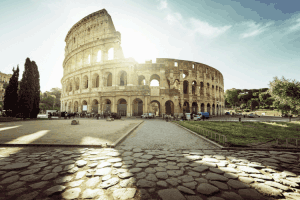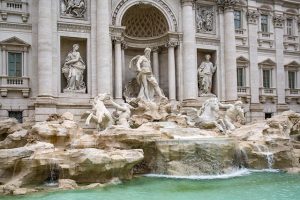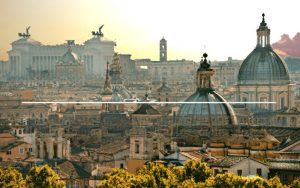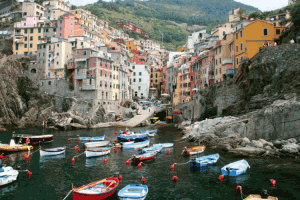The popular leaning tower of Pisa needs no introduction. It is featured among the fabulous monuments created by humans. This tower is also listed as one of the seven wonders of the ancient world. There are several bell towers worldwide, but none has caught the imagination of the tourist population like the leaning tower of Pisa. Although we have heard many notations of the Leaning Tower of Pisa facts, we bring you some unheard facts and stories surrounding this popular tourist attraction in the Pisa town of Rome.
What is the story behind the Leaning Tower of Pisa?
The iconic Leaning Tower of Pisa was originally conceived as a grandiose display to vaunt Pisa’s political power and stature as one of the major historical maritime republics at the height of its glory in the 12th century, but a flawed foundation rapidly transformed it into an architectural oddity. Construction of the tower and adjacent cathedral complex began in 1173 on soft ground just a few hundred meters from the Arno River, likely the site of an ancient port.
The circular structure was slated to stand vertically with eight stories as a freestanding bell tower but had already begun noticeably tilting before the second level was completed just five years into the decades-long building process. Numerous pauses in construction followed as architects sought solutions to correct the lean caused by an inadequate foundation sunk into unstable, waterlogged soil, adding structural supports and attempting to compensate for shifts on upper floors that still failed to prevent slippage.
This flawed fundament and underlying subsurface geologic issues resulted in the now famously skewed silhouette that made Leaning Tower of Pisa legendary centuries before tourism or photography brought its distinctive tilt worldwide fame and icon status. In the end, the very quirks of fate and geology that should have condemned it ensured the Tower’s enduring legacy instead.
Leaning Tower Of Pisa Facts And History
The leaning of the structure is due to the marshy land
The area terrain is loose, and this structure is leaning primarily because of the marshy land. The clay base holds this unique structure with only a 3 feet deep foundation. Credits to the architects and the time duration during which the structure maintained stability to hold firm. One of the amazing Leaning Towers of Pisa is a fact which many people do not know.
The tower is not a standalone structure
The leaning tower of Pisa was part of the bigger cathedral complex and was not meant to be a standalone structure. The other structures of this complex project are the Cathedral, the Cemetery, the Bell Tower, and the Baptistery. This last element was built as part of the overall complex conceptualized to represent the bell tower of the neighboring Cathedral of Santa Maria Assunta.
Suggested Read: Spectacular Things To Do In Pisa
Two centuries to build this architectural masterpiece
Due to construction complications and ongoing battles, the construction was completed over two centuries. But thanks to this delay, the structure has maintained its stability and holds firm even though it is leaning. Moreover, the Engineer, John Burland, who oversaw building this tower, has already admitted that he misjudged analyzing the soil mechanics. Therefore, many would argue that there is insufficient evidence that the architect who built this masterpiece was heavily influenced by a natural phenomenon. Unfortunately, not many people know about this important chapter in the leaning tower of Pisa history.
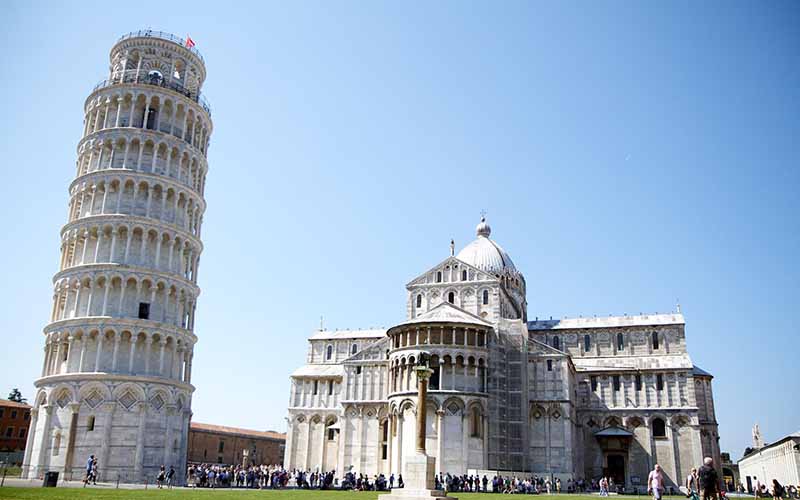
The tower weighs close to 14,500 tons
An amazing leaning tower of Pisa fact is that the tower has close to 300 steps that will give you the much-needed cardio while climbing the spiral staircase housed within the tower. Your legs may tremble if you reach the top as you are not used to such an extensive activity in your routine life. The entire weight of this tower comes to around 14,500 tons. Well! This may not be news to many.
The leaning of the tower is changing directions
Yes! You heard it right. The tower’s tilt is switching directions. Many engineers were entrusted to correct the learning over the years. When the construction of the third floor started, the structure was already leaning towards the north. As a result of the correction done, the stacking of the fourth floor onwards, the tower settled back to the south and stayed firm since then.
Read More: Visit Beautiful Beaches In Italy
Benito Mussolini is partially responsible for its tilt
The fascist dictator of Italy, Benito Mussolini, once called the leaning tower of Pisa a national disgrace and wanted to rectify the tilt on priority. You may not have come across this superlative leaning tower of Pisa facts. He requested several holes be drilled into the tower’s foundation, which eventually made the base heavier and tilts more than before.
The structure is now sinking and leaning more than before
The complex structure is sinking due to the marshy nature of the soil even though it is built on sods of earth transferred from Jerusalem to Pisa via a ship. One of the astonishing facts about the leaning tower of Pisa history that would be unknown is that the leaning started only after the second floor was constructed. The tilting worsened over time and even more, after the bell chamber was added. Massive correction projects conducted that included leveling the soil beneath and introducing anchoring mechanisms helped secure a firm stance that makes it secure for the next 200 years. However, researchers have predicted that the tower will resume tilting from the early 23rd century onwards.
It featured among the medieval world’s seven wonders
Superlative human-made structures are entrusted with the Wonders of the World title. The leaning tower of Pisa was named one of them in the medieval world due to its amazing Romanesque architecture and miraculously leaning while still holding firm.
Not the only leaning structure in Pisa
Pisa city features many leaning towers, mainly due to its marshy soil. The bell towers of the Church of San Nicola and the Church of St. Michele Dei Scalzi also share the same fate as the leaning tower of Pisa. This would not surprise you as it is part of the leaning tower of Pisa history facts that you would have seen frequently.
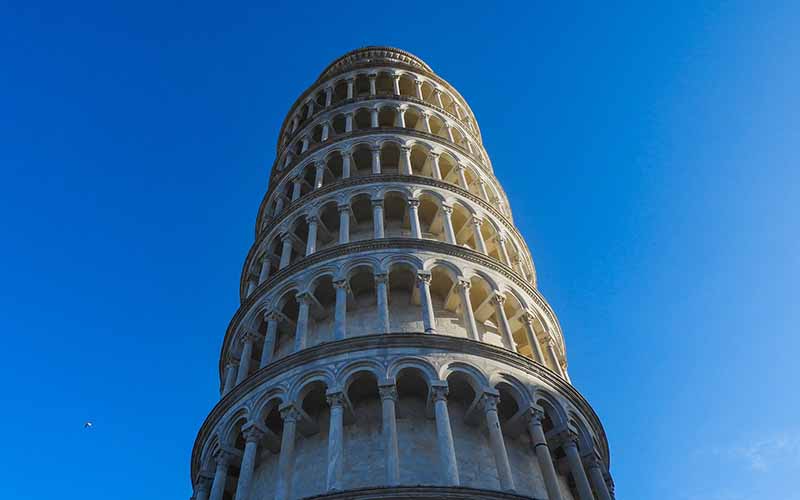
The bells in the tower terrace have stopped ringing since the 20th century
Seven gigantic bells are placed on the tower terrace, each representing a musical note. Several scientists and researchers stated that the vibrations caused by the bells ringing by swinging the bells on the tower top can lead to the further leaning of the tower. Hence, today these bells are operated by electronic hammers. This would be one of the unknown leaning towers of Pisa facts.
The tower features as a UNESCO-certified World Heritage Site
The leaning tower of Pisa was bagged the prestigious UNESCO World Heritage Site in 1987. The four buildings placed on the Square of Miracles are blessed with an excellent example of medieval architecture and continue even today to influence various elements of Italian art.
Galileo Galilei was baptized here
The Square of Miracles is one of the best medieval structures in Italian history. This site is more popular because the popular scientist Galileo Galilei was baptized here in 1565. Galileo, the father of observational astronomy, conducted several historical, scientific experiments here. Unfortunately, this leaning tower of Pisa facts is still unknown to many travelers.
The tower would collapse if straightened
The leaning of this tower is a natural phenomenon. Several efforts were unsuccessful to straighten this tower. However, they managed to secure the structure. It’s never been easy to conquer natural forces. Many researchers have concluded that if the tower is straightened from the current 5.44o tilt, it will surely collapse.
It Stood Throughout Dozens of Strong Earthquakes
Despite concerns from its pronounced lean, the Leaning Tower of Pisa has demonstrated remarkable resilience against damage from dozens of earthquakes since its initial construction. Built upon soft, pliable clay, sandy soil and the former location of an ancient seaside harbor, the Tower’s foundations almost resemble the floating design of modern earthquake-proof buildings, absorbing significant seismic vibrations.
When a devastating earthquake struck and destroyed much of Pisa in 1284 shortly after the seventh floor was completed, the Tower – supported by its flexible, uneven base – suffered only minor damage to its third story cornices thanks to clever architectural adjustments during construction that anticipated potential shifts in the underlying ground. This flexibility protecting it from earthquakes helps explain how the Tower still stands despite an overall tilt that approached five degrees at its peak in the late 20th century.
Bombings During WWII Missed the Tower Completely
During the Battle of Pisa waged from 1943 to 1944 to liberate Italy during World War II, Allied forces endeavored to avoid bombing the Leaning Tower even while dropping ordnance on nearby targets like Pisa Centrale railway station and the city’s marshaling yards. Respecting the Tower of Pisa’s cultural significance, bombardiers took care to precisely chart bombing runs to minimize strikes around the city’s famous landmark despite its proximity to critical transportation infrastructure for the Axis occupiers.
As a result, both American and British pilots were able to heavily damage core Pisan military assets adjacent the Tower while leaving the centuries-old architectural icon untouched as they gained control of the strategic area. Though many centuries-old Tuscan churches and medieval buildings were destroyed by bombing elsewhere during the war, the Tower improbably yet remarkably survived without a scratch.
Essential Things to Know Before Visiting the Leaning Tower of Pisa
1. Location and Access
The tower sits in a beautiful square called Piazza del Duomo, which people also call Piazza dei Miracoli (Square of Miracles). You’ll find it just north of the Arno River. While most tourists rush to see the tower, don’t forget that it’s actually part of a bigger group of buildings. The Pisa Cathedral next door is actually the largest building in the square and worth checking out.
2. Height and Perspective
The tower reaches 57 meters (186 feet) high. Many visitors are surprised that it’s not taller in real life! But don’t let its size fool you – what makes it special is the beautiful marble work and its famous lean. Being not too tall actually helps visitors see all the amazing details up close.
3. Current Tilt Status
Right now (2024), the tower leans at 3.99 degrees. That’s quite a bit less than its old 5.5-degree tilt from before the 2001 repairs. The fixes were needed to keep the tower safe, but they made sure to keep its famous lean. Engineers keep a close watch on the tower every day to make sure it’s safe for visitors while staying tilted.
4. Climbing Regulations
- You must book your tickets ahead of time
- Only 30 people can climb at once
- Kids must be 8 or older to climb
- There are 296 steps to climb (no elevator)
- You must show up on time for your slot
- You need to put your bags in lockers before climbing
5. Best Visiting Strategy
- Come early (8:30-10:00) to avoid big crowds
- Plan to spend 30-40 minutes for the whole climb
- Visit in spring (March-May) or fall (September-October) for nice weather and smaller crowds
- Buy a combo ticket to see all the buildings in Piazza dei Miracoli
- For those fun “pushing the tower” photos, look for the marked spots near the cathedral
FAQ’s About Leaning Tower Pisa :
Why does the Tower of Pisa lean?
Has the lean been increasing over time?
What efforts have been made to stabilize the Leaning Tower?
Has seismic activity affected the Leaning Tower?
Can visitors currently climb the Leaning Tower?
Read More: Incredible Facts of the Roman Colosseum
Final Words
The leaning tower of Pisa continues to bring in several untold stories and facts that were uncovered quite later. This masterpiece, if standing firm and erect, will continue to woo the imagination of the tourist world in the years to come. The next time around when you are travelling to Italy on an Italy Italy tourist visa, stop by to experience this wonder.
